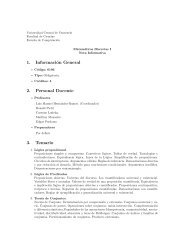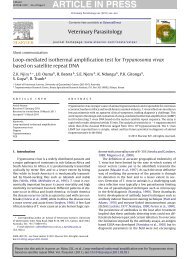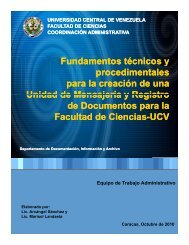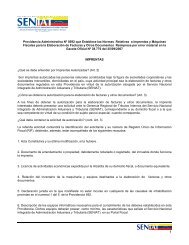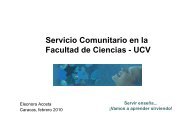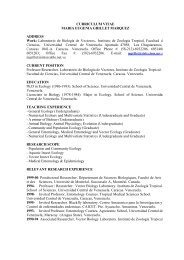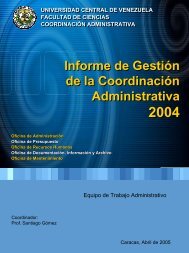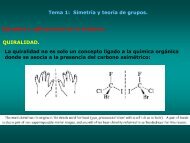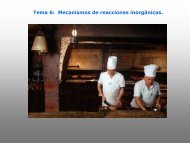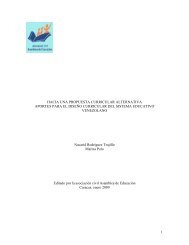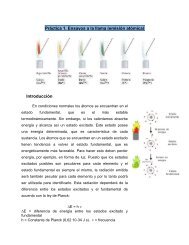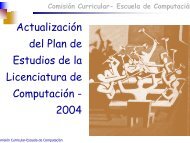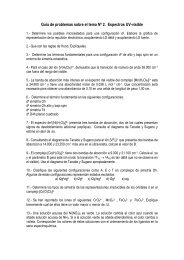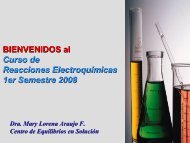Collecting and Preserving
Collecting and Preserving
Collecting and Preserving
- No tags were found...
Create successful ePaper yourself
Turn your PDF publications into a flip-book with our unique Google optimized e-Paper software.
5.6 - Placing the Labels.......................................................................................................... 475.7 - Bar Coding ............................................................................................................ 485.8 - Labeling Vials ............................................................................................................485.9 - Labeling Microscope Slides .......................................................................................... 485.10 - Identification Labels ....................................................................................................48Part 6 - Care of the Collection ........................................................................................................... 486.1 - Housing the Collection .................................................................................................. 486.2 - Protecting Specimens From Pests <strong>and</strong> Mold ................................................................. 49Part 7 - Packing <strong>and</strong> Shipping Specimens .......................................................................................... 507.1 - Packing Materials. ......................................................................................................... 507.2 - Pinned Specimens..........................................................................................................507.3 - Specimens in Vials......................................................................................................... 517.4 - Loading Cartons. ........................................................................................................... 517.5 - Shipping Microscope Slides .......................................................................................... 527.6 - Shipping Live Specimens. ............................................................................................. 52IntroductionThe Class Arthropoda, which includes insects, spiders, mites, <strong>and</strong> their relatives, is without question the mostsuccessful group of organisms on the planet. Insects alone account for nearly 55% of all species known to science(Barrowclough 1992). Spiders, mites <strong>and</strong> insects inhabit every terrestrial habitat on the planet <strong>and</strong> play a major role inthe evolution <strong>and</strong> maintenance of biotic communities. They are the primary pollinators of flowering plants; they areimportant consumers <strong>and</strong> recyclers of decaying organic matter; <strong>and</strong> they are integral components in the foodwebs ofvertebrates <strong>and</strong> other invertebrates. For these reasons, <strong>and</strong> many others, the study of insects <strong>and</strong> their relatives is ofincreasing importance as society faces increased challenges to preserve <strong>and</strong> enhance environmental quality, reducepesticide usage, increase crop productivity, control food costs, <strong>and</strong> increase trade in the global community. Pest speciesare responsible for enormous economic losses annually, attacking crops <strong>and</strong> ornamental plants, causing damage to ourfood <strong>and</strong> clothing, <strong>and</strong> vectoring diseases that effect cultivated plants, our pets <strong>and</strong> livestock, <strong>and</strong> ourselves. The damagecause by pests species is far outweighed by the positive effects of beneficial species. Pollinators ensure the production offruit, parasitoids <strong>and</strong> predators help control pest species, some species contain chemicals of pharmaceutical value, <strong>and</strong> alarge number of species contribute to the decomposition <strong>and</strong> recycling of dead <strong>and</strong> decaying matter.Because of the damage inflicted by pest species, increased knowledge of these organisms has the potential to savelives <strong>and</strong> money. Correct identification of a newly detected pest or disease vector is of utmost importance because thescientific name of an organism is the key to all known information about its morphology, its behavior <strong>and</strong> life history,<strong>and</strong> its potential threat to human welfare.The behavior of insects <strong>and</strong> mites can be observed most easily in their natural environments. However, manyspecies, especially the smaller ones, must be collected <strong>and</strong> properly preserved before they can be identified. Becausecorrect identification seldom is easy, it is important that specimens be preserved in the best condition possible. Theidentification of a particular insect or mite usually requires examination of minute details of its anatomy with the aid of ah<strong>and</strong> lens or microscope. Some specimens may require dissection or even study with the electron microscope. If thesedetails on a specimen are concealed, missing, or destroyed because of improper h<strong>and</strong>ling or preservation, identification ismade difficult or impossible, <strong>and</strong> information about the species to which it belongs cannot be made available. Therefore,adequate preservation <strong>and</strong> proper labeling of specimens are essential to their identification.The methods used to collect insects <strong>and</strong> mites are dictated by the ultimate goal of the samples collected. Insectsmay be collected as a hobby for personal enjoyment of their diversity <strong>and</strong> beauty. They may be collected in conjunctionwith school courses on biology or entomology. Specific insects groups may be sampled to assess or measure biodiversity* This manual is an updated <strong>and</strong> modified version of the USDA Misc. Publication no. 1443 published by the AgriculturalResearch service in 1986 <strong>and</strong> Edited by George C. Steyskal, William L. Murphy, <strong>and</strong> Edna M. Hoover.



